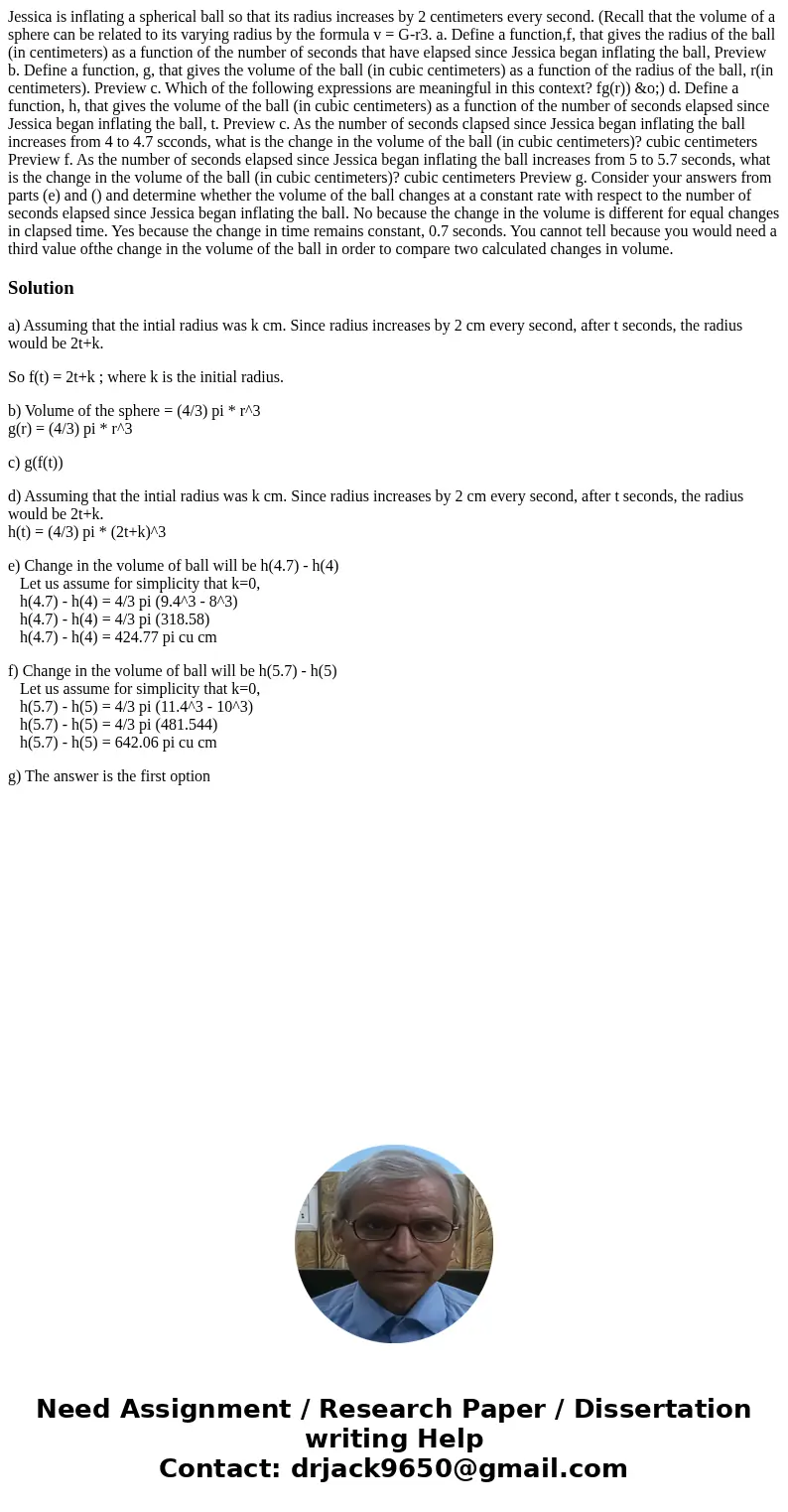Jessica is inflating a spherical ball so that its radius increases by 2 centimeters every second. (Recall that the volume of a sphere can be related to its varying radius by the formula v = G-r3. a. Define a function,f, that gives the radius of the ball (in centimeters) as a function of the number of seconds that have elapsed since Jessica began inflating the ball, Preview b. Define a function, g, that gives the volume of the ball (in cubic centimeters) as a function of the radius of the ball, r(in centimeters). Preview c. Which of the following expressions are meaningful in this context? fg(r)) &o;) d. Define a function, h, that gives the volume of the ball (in cubic centimeters) as a function of the number of seconds elapsed since Jessica began inflating the ball, t. Preview c. As the number of seconds clapsed since Jessica began inflating the ball increases from 4 to 4.7 scconds, what is the change in the volume of the ball (in cubic centimeters)? cubic centimeters Preview f. As the number of seconds elapsed since Jessica began inflating the ball increases from 5 to 5.7 seconds, what is the change in the volume of the ball (in cubic centimeters)? cubic centimeters Preview g. Consider your answers from parts (e) and () and determine whether the volume of the ball changes at a constant rate with respect to the number of seconds elapsed since Jessica began inflating the ball. No because the change in the volume is different for equal changes in clapsed time. Yes because the change in time remains constant, 0.7 seconds. You cannot tell because you would need a third value ofthe change in the volume of the ball in order to compare two calculated changes in volume.
a) Assuming that the intial radius was k cm. Since radius increases by 2 cm every second, after t seconds, the radius would be 2t+k.
So f(t) = 2t+k ; where k is the initial radius.
b) Volume of the sphere = (4/3) pi * r^3
g(r) = (4/3) pi * r^3
c) g(f(t))
d) Assuming that the intial radius was k cm. Since radius increases by 2 cm every second, after t seconds, the radius would be 2t+k.
h(t) = (4/3) pi * (2t+k)^3
e) Change in the volume of ball will be h(4.7) - h(4)
Let us assume for simplicity that k=0,
h(4.7) - h(4) = 4/3 pi (9.4^3 - 8^3)
h(4.7) - h(4) = 4/3 pi (318.58)
h(4.7) - h(4) = 424.77 pi cu cm
f) Change in the volume of ball will be h(5.7) - h(5)
Let us assume for simplicity that k=0,
h(5.7) - h(5) = 4/3 pi (11.4^3 - 10^3)
h(5.7) - h(5) = 4/3 pi (481.544)
h(5.7) - h(5) = 642.06 pi cu cm
g) The answer is the first option

 Homework Sourse
Homework Sourse